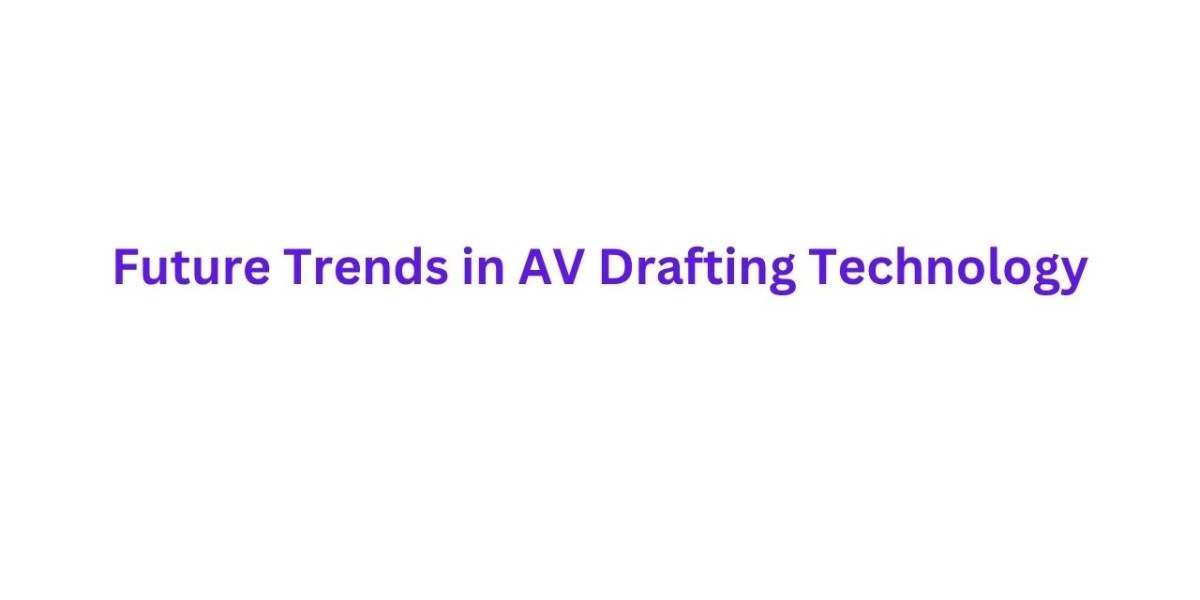As the audio visual industry continues to grow at a rapid pace, so does the need for smarter, faster, and more efficient design processes. At the heart of this transformation is AV drafting technology. Traditionally known for technical drawings and layout schematics, AV drafting tools have evolved from simple 2D representations to dynamic 3D models, collaborative cloud-based platforms, and intelligent automation systems. With demand increasing across corporate offices, educational campuses, government buildings, and smart homes, the expectations for drafting accuracy and visual clarity are at an all-time high.
In this blog, we explore the future trends in AV drafting technology. From AI integration to real-time collaboration and cloud optimization, these trends are not just improving workflow efficiency but also enhancing project quality and client satisfaction.
1. AI and Automation for Smart Drafting
The most exciting trend shaping the future of AV drafting is artificial intelligence. AI is being incorporated into drafting software to automate repetitive tasks like cable routing, device placement, error detection, and compliance checks. Instead of spending hours aligning symbols and ensuring standards, designers can rely on smart assistants that flag issues, suggest corrections, and even auto-generate parts of a schematic based on predefined rules.
In the near future, AI algorithms will become more context-aware. They will learn from past projects, recognize room types and equipment preferences, and suggest layouts that best suit acoustics, lighting, and user needs. This will make drafting not only faster but also more intelligent.
2. Cloud-Based Collaboration
Remote collaboration is now a necessity rather than a luxury. As AV integration teams often include architects, consultants, engineers, and installers across locations, cloud-based platforms for AV drafting are becoming increasingly important.
The future of AV drafting lies in centralized cloud environments where multiple team members can simultaneously edit, review, and comment on a drawing. This eliminates the need for back-and-forth email exchanges and reduces version conflicts. Updates made by one stakeholder are instantly visible to all, which supports real-time decision-making and minimizes rework.
Additionally, cloud storage ensures data safety, enables mobile access, and facilitates seamless handoffs between design and field teams.
3. Integrated BIM Workflows
Building Information Modeling or BIM has been a cornerstone in architecture and construction. Now, AV drafting tools are being designed to integrate smoothly with BIM platforms. This trend ensures that AV systems are fully coordinated with the broader building infrastructure, including lighting, HVAC, structural components, and fire safety systems.
In the future, expect tighter interoperability between AV drafting software and BIM tools. This integration allows AV professionals to avoid clashes with other building elements, allocate accurate space for racks and conduits, and visualize installations in 3D within the architectural environment. It also promotes better communication with architects and general contractors.
4. 3D Visualization and AR Support
As client expectations rise, static 2D line drawings are no longer sufficient. Drafting software is moving toward 3D visualization, allowing AV professionals to create immersive environments that showcase not just the system design but also how it fits within the space.
Upcoming features will also include Augmented Reality or AR support. Using AR headsets or mobile devices, clients and stakeholders will be able to walk through a room and see virtual overlays of AV equipment before anything is installed. This improves decision-making, shortens approval cycles, and enhances the sales process.
5. Standardized Libraries and Smart Objects
Another future trend is the use of intelligent symbol libraries. Manufacturers are now offering up-to-date, pre-built 2D and 3D models of their devices, which can be imported directly into drafting tools. These smart objects are not just symbols but include real product data like dimensions, power requirements, connectivity, and mounting options.
Such intelligent blocks reduce errors, speed up the drafting process, and ensure consistency. In the future, expect more manufacturers to offer real-time cloud-connected libraries that automatically update device specs and compliance information.
6. Integration with Proposal and Estimation Tools
AV drafting will no longer be isolated from project quoting. Modern tools are beginning to integrate with proposal generation and estimation software. This allows designers to instantly generate a bill of materials, calculate labor hours, and create visual layouts that enhance RFP responses.
Future drafting platforms will likely feature one-click export options that generate not just drawings but also pricing sheets, installation guides, and compliance documentation. This holistic workflow improves productivity and supports business growth.
7. Voice-Activated Commands and UI Simplification
User interfaces in AV drafting software are also undergoing transformation. Expect to see voice-activated drafting commands, gesture-based controls, and simplified interfaces aimed at reducing the learning curve. These innovations will help new users get productive quickly while allowing experienced drafters to work more efficiently.
Incorporating machine learning, the software will begin to adapt to individual drafting styles, recommend shortcuts, and offer tips for better layouts. Such personalization will define the next wave of user-friendly AV design platforms.
8. Sustainability Considerations in Drafting
With green building standards becoming a priority, AV drafting tools will also include sustainability features. Designers will be able to simulate energy consumption, plan efficient cable routing, and select eco-friendly materials. Integration with LEED scoring systems and automated documentation for green compliance will become standard features.
Drafting software will help AV professionals align better with environmental goals and contribute to more sustainable building practices.
Conclusion
The future of AV drafting technology is bright, fast-paced, and deeply intelligent. What was once a static, technical task is now becoming a dynamic, collaborative, and data-driven process. From AI-powered automation to real-time 3D visualization, the evolution of drafting tools is shaping how AV systems are designed, approved, and delivered.
AV integrators, consultants, and designers who embrace these emerging trends will be well-positioned to lead in a competitive market. Whether it is automating layouts, collaborating across teams, or visualizing stunning presentations, the next generation of AV drafting tools will redefine what is possible in the AV industry.
Read more: https://meta.mactan.com.br/read-blog/70642






